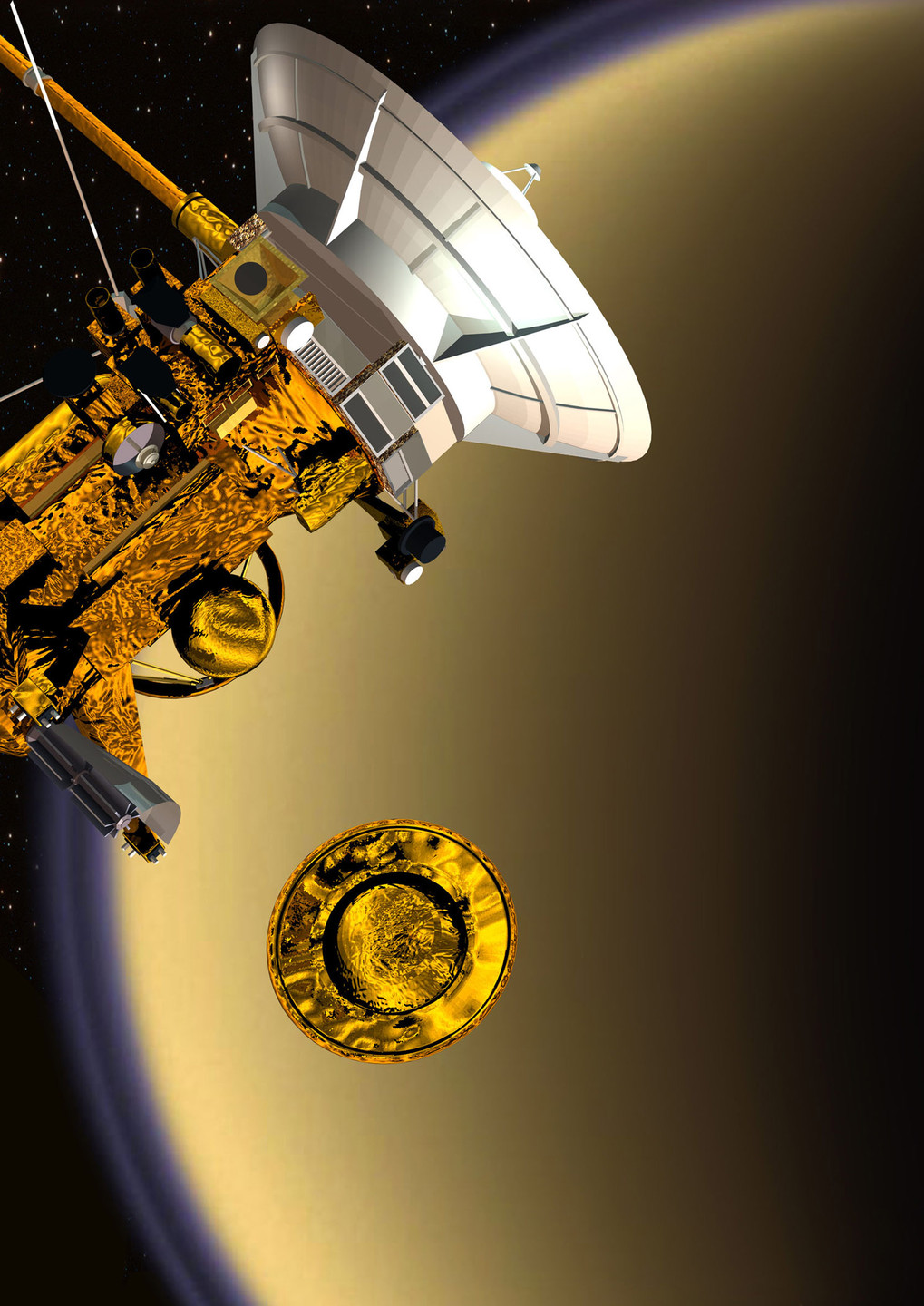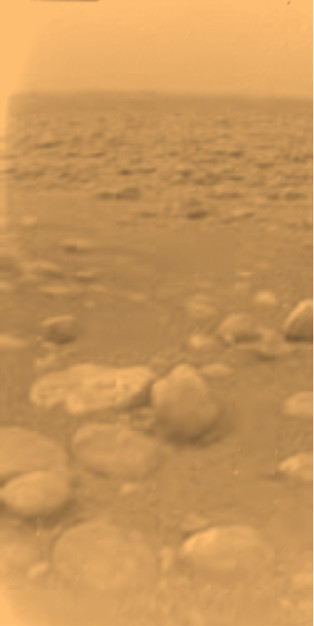Destined for the study of Saturn and its satellites, the Cassini probe, named after the first head of the Paris Observatory, was launched by NASA in 1997 and arrived at the planet in 2004; it functioned until 2017, The European Space Agency constructed Huygens, a lander carried by Cassini, then separated from to pass through the atmosphere of Titan, Saturn’s largest satellite. Under a thick methane and nitrogen atmosphere, Huygens discovered liquid hydrocarbon oceans and large blocks of ice. In spite of the possible existence of pre-biotic molecules, it is unlikely that there is life on Titan, even in its most primitive form, because of the extremely low surface temperature: - 80°C.

